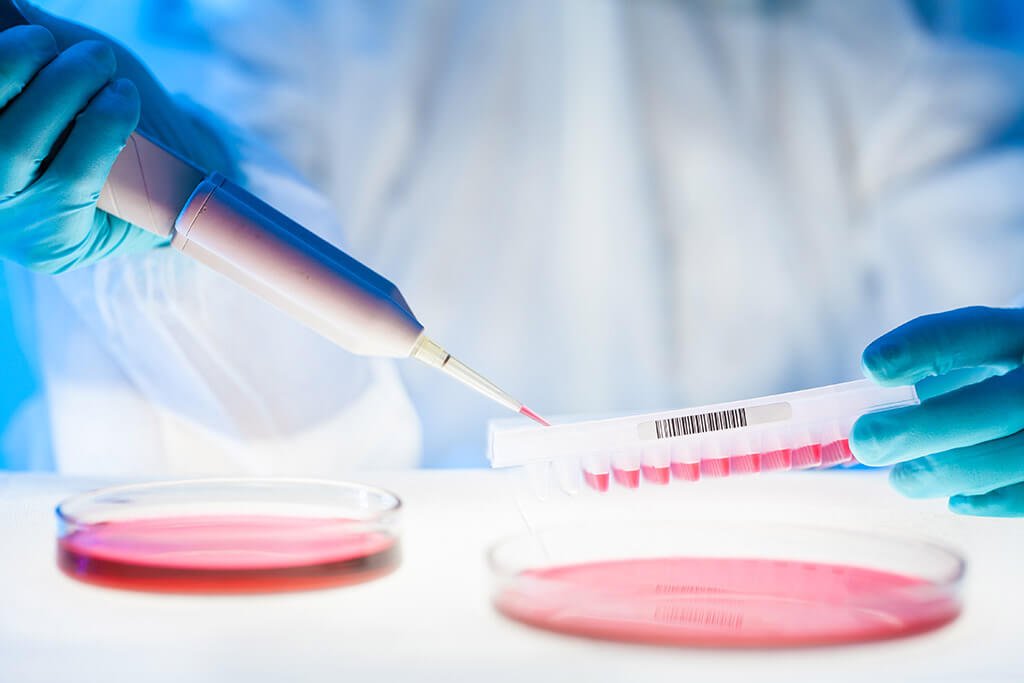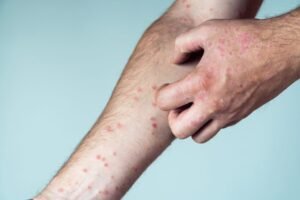Have you ever felt worried about not being able to get or keep an erection? The struggle to perform in intimate moments can be emotionally taxing and impact relationships, self-esteem, and overall well-being. But here’s the good news – you’re not alone, and there are solutions.
In this article, we’ll delve into the intricacies of Erectile Dysfunction, exploring its causes, symptoms, risk factors, diagnosis, prevention and the array of treatments available.
So, let’s embark on a journey to demystify Erectile Dysfunction and empower you with the knowledge needed to take charge of your sexual health.
Definition and Prevalence

Erectile Dysfunction (ED), commonly known as male impotence, is when a guy has trouble getting or keeping an erection, affecting his ability to enjoy intimate moments. 1
According to the National Institute of Diabetes and Digestive and Kidney Diseases (NIH), ED is defined as a condition in which you are unable to get or keep an erection firm enough for satisfactory sexual intercourse.
It is essential to distinguish between occasional difficulty achieving or maintaining an erection, which is normal, and persistent erectile dysfunction, which may indicate an underlying problem.
The prevalence of erectile dysfunction increases with age. While it is more common in older men, it is not an inevitable part of aging.
Various studies estimate that approximately 5% of men aged 40 and up to 15-25% of men aged 65 experience some degree of erectile dysfunction. By 2025, the condition will affect as many as 322 million men globally.
In 2016 studies, excessive consumption of internet pornography among younger men (ages 18-24) has experienced the potential development of erectile dysfunction (ED).
Definition and Prevalence

Erectile Dysfunction (ED), commonly known as male impotence, is when a guy has trouble getting or keeping an erection, affecting his ability to enjoy intimate moments. 2
According to the National Institute of Diabetes and Digestive and Kidney Diseases (NIH), ED is defined as a condition in which you are unable to get or keep an erection firm enough for satisfactory sexual intercourse.
It is essential to distinguish between occasional difficulty achieving or maintaining an erection, which is normal, and persistent erectile dysfunction, which may indicate an underlying problem.
The prevalence of erectile dysfunction increases with age. While it is more common in older men, it is not an inevitable part of aging.
Various studies estimate that approximately 5% of men aged 40 and up to 15-25% of men aged 65 experience some degree of erectile dysfunction. By 2025, the condition will affect as many as 322 million men globally.
In 2016 studies, excessive consumption of internet pornography among younger men (ages 18-24) has experienced the potential development of erectile dysfunction (ED).
This phenomenon is called Porn-Induced Erectile Dysfunction (PIED), which is attributed to the desensitization of the brain’s reward system, leading to difficulties in arousal and satisfaction with real-life sexual encounters.
What Are The Common Symptoms of Erectile Dysfunction?
Common symptoms of erectile dysfunction might include persistent:
- Trouble achieving an erection
- Trouble maintaining an erection
- Reduced sexual desire or low libido
- Emotional impact on an individual
Causes and Risk Factors
1. Physical Causes of Erectile Dysfunction
- Age significantly influences Erectile Dysfunction (ED) risk, increasing with advancing years. According to the American Journal of Medicine, as men grow older, physiological changes such as reduced blood flow, hormonal fluctuations, and increased likelihood of chronic health conditions contribute to the higher incidence of ED.
- Vascular Issues: Blood flow plays a crucial role in achieving and maintaining an erection. Conditions that affect blood vessels can contribute to erectile dysfunction by reducing blood flow to the penis, such as:
- atherosclerosis (hardening of the arteries)
- hypertension
- diabetes
- Peyronie’s disease
- Renal failure or kidney problem
- Hormonal Imbalance: Several hormonal imbalances can contribute to erectile dysfunction (ED). Hormones like testosterone are essential for normal sexual function. Here are five hormonal problems often linked to ED:
- Low testosterone levels – can lead to reduced libido and difficulty achieving or maintaining an erection.
- Thyroid Disorders – Both hyperthyroidism and hypothyroidism can affect sexual function and contribute to ED.
- Hyperprolactinemia: Elevated levels of prolactin can interfere with the average production of testosterone, leading to ED.
- Cortisol Imbalance: Chronic stress can affect blood flow and hormone balance in ED.
- Insulin Resistance can lead to hormonal imbalances that contribute to ED. Diabetes is known to damage blood vessels and nerves, affecting sexual function.
- Pelvic Surgeries and Trauma: Surgeries or injuries that affect the pelvic area can damage nerves and tissues involved in erectile function.
- prostate surgery
- colorectal surgery
- bladder surgery
- pelvic fractures
- penile or testicular surgeries
- pelvic radiation therapy
- Neurological Disorders: Conditions that affect the nervous system that can interfere with transmitting nerve signals necessary for erections, such as:
- Multiple sclerosis (MS)
- Parkinson’s disease
- spinal cord injuries
- Alzheimer’s disease
- stroke
- epilepsy
- peripheral neuropathy
- Medications: Certain prescription drugs are known to be associated with the side effect of erectile dysfunction (ED). Here are five types of prescription drugs that have been linked to ED:
- Antidepressants (Selective Serotonin Reuptake Inhibitors – SSRIs): Medications like fluoxetine (Prozac), sertraline (Zoloft), and paroxetine (Paxil) commonly used to treat depression and anxiety may contribute to ED as a side effect.
- Antihypertensive Medications (Beta-blockers and Diuretics): Drugs used to manage high blood pressure, such as atenolol, metoprolol (beta-blockers), and hydrochlorothiazide (a diuretic), have been associated with ED.
- Antipsychotic Medications: Certain antipsychotic drugs, including haloperidol and risperidone, may impact sexual function and contribute to ED.
- Hormonal Medications (Hormone Therapy for Prostate Cancer): Androgen deprivation therapy (ADT) used in the treatment of prostate cancer can lead to a decrease in testosterone levels, potentially causing ED.
- 5-Alpha Reductase Inhibitors: Medications like finasteride and dutasteride, commonly prescribed for conditions such as benign prostatic hyperplasia (BPH), may be associated with sexual side effects, including ED.
- Chemotherapy: Some chemotherapy drugs may have effects on sexual function.
2. Psychological Causes of ED

- Stress and Anxiety: Mental health plays a significant role in sexual function. High levels of stress, anxiety, or depression can contribute to erectile dysfunction. Performance anxiety, specifically fearing a repeat occurrence of ED, can perpetuate the problem.
- Relationship Issues: Conflicts or dissatisfaction in a relationship can impact sexual function. Lack of communication, unresolved issues, or emotional distance may contribute to erectile dysfunction.
- Low Self-Esteem: ED can lead to feelings of inadequacy and low self-esteem, creating a vicious cycle where performance anxiety further exacerbates the problem.
- Porn-Induced Erectile Dysfunction (PIED): Excessive pornography use is tentatively linked to erectile dysfunction due to desensitization and unrealistic expectations. Individual reactions vary, influenced by psychological well-being and relationship dynamics.
3. Lifestyle and Environmental Factors
- Smoking: Tobacco use is a significant risk factor for erectile dysfunction. Smoking damages blood vessels, reducing blood flow to the penis.
- Alcohol and Substance Abuse: Excessive alcohol consumption and the use of illicit substances can contribute to erectile dysfunction.
- Obesity and Lack of Exercise: Maintaining a healthy weight and regular physical activity are essential for overall health, including sexual function.
Diagnosis
Diagnosing erectile dysfunction involves a comprehensive assessment of medical history, a physical examination, and, if necessary, additional tests.
Diagnosing erectile dysfunction involves a comprehensive assessment of medical history, a physical examination, and, if necessary, additional tests.

- Medical History: The healthcare provider will inquire about the onset and duration of symptoms, overall health, lifestyle factors, and any medications being taken.
- Physical Examination: A physical examination may reveal signs of underlying health conditions, such as cardiovascular disease or hormonal imbalances.
- Laboratory Tests: Blood tests may be conducted to check for conditions such as diabetes, hormonal imbalances, and lipid profile.
- Imaging Studies: In some cases, imaging studies, such as ultrasound, may be used to assess blood flow to the penis.
Treatment Options

The choice of treatment for erectile dysfunction depends on the underlying cause and individual factors. Treatment options include:
- Lifestyle Changes: Adopting a healthy lifestyle can significantly improve erectile function. This includes maintaining a healthy weight, regular exercise, smoking cessation, and moderation in alcohol consumption.
- Counselling and Psychotherapy: Addressing psychological factors through counselling can be beneficial, especially in cases where stress, anxiety, or relationship issues contribute to erectile dysfunction.
- Medications: Several oral medications, such as sildenafil (Viagra), tadalafil (Cialis), and vardenafil (Levitra), are commonly prescribed to enhance blood flow to the penis and facilitate erections.
- Vacuum Erection Devices: These devices create a vacuum around the penis, drawing blood into the area to induce an erection. A constriction ring is then placed at the base of the penis to maintain the erection.
- Injections: Some individuals may use intracavernosal injections, where medication is injected directly into the penis to stimulate an erection.
- Penile Implants: In cases where other treatments are ineffective, surgical placement of a penile implant may be considered. This option involves the insertion of inflatable or semi-rigid rods into the penis.
Future Treatments of Erectile Dysfunction

The future of Erectile Dysfunction (ED) treatment holds exciting prospects with innovations like stem cell therapy and Platelet-Rich Plasma (PRP).3
Stem cell treatments aim to harness the regenerative potential of cells to improve blood flow and tissue repair in the penile area. Preliminary studies suggest promising results in restoring erectile function.4
PRP, derived from the patient’s blood, contains growth factors that may stimulate tissue regeneration. Injecting PRP into the penis shows potential in enhancing erections by promoting the growth of healthy tissue.
These emerging therapies represent a shift towards regenerative medicine, providing alternatives for those unresponsive to traditional treatments.
As research progresses, these approaches may offer more targeted and sustainable solutions for ED, emphasizing a personalized and regenerative approach to sexual health.
Coping and Support
Living with erectile dysfunction can be challenging, affecting not only the individual but also their partner and overall well-being. Seeking support from healthcare professionals, support groups, or mental health professionals can be instrumental in coping with the emotional impact of erectile dysfunction.
Conclusion
Erectile dysfunction is a multifaceted condition with physical, psychological, and environmental factors contributing to its development. While it is more common with age, it is not an inevitable consequence of aging. Understanding the causes, risk factors, and available treatments is crucial for individuals affected by this condition.
Medical professionals play a crucial role in diagnosing and treating erectile dysfunction, tailoring interventions to address the specific needs and underlying causes of each individual.
With advancements in research and a growing understanding of the complexities of erectile dysfunction, there is hope for more effective and targeted treatments in the future.
In the meantime, open communication, lifestyle modifications, and a holistic approach to health are essential components of managing and overcoming erectile dysfunction.
References
- Erectile dysfunction. 2021. Mayo Clinic. Available at: https://www.mayoclinic.org/diseases-conditions/erectile-dysfunction/symptoms-causes/syc-20355776 ↩︎
- Campbell, J.D. (2020). The good, bad, and the ugly of regenerative therapies for erectile dysfunction. Translational Andrology & Urology. https://www.ncbi.nlm.nih.gov/pmc/articles/PMC7108995/PMC4708 ↩︎
- Ryu, J. (2012). Regenerative technology for future therapy of erectile dysfunction. Translational Andrology & Urology.https://www.ncbi.nlm.nih.gov/pmc/articles/PMC4708247/ ↩︎
- Liu, J.L. (2021). Restorative Therapies for Erectile Dysfunction: Position Statement From the Sexual Medicine Society of North America (SMSNA). Sexual Medicine. https://www.sciencedirect.com/science/article/pii/S2050116121000234 ↩︎












